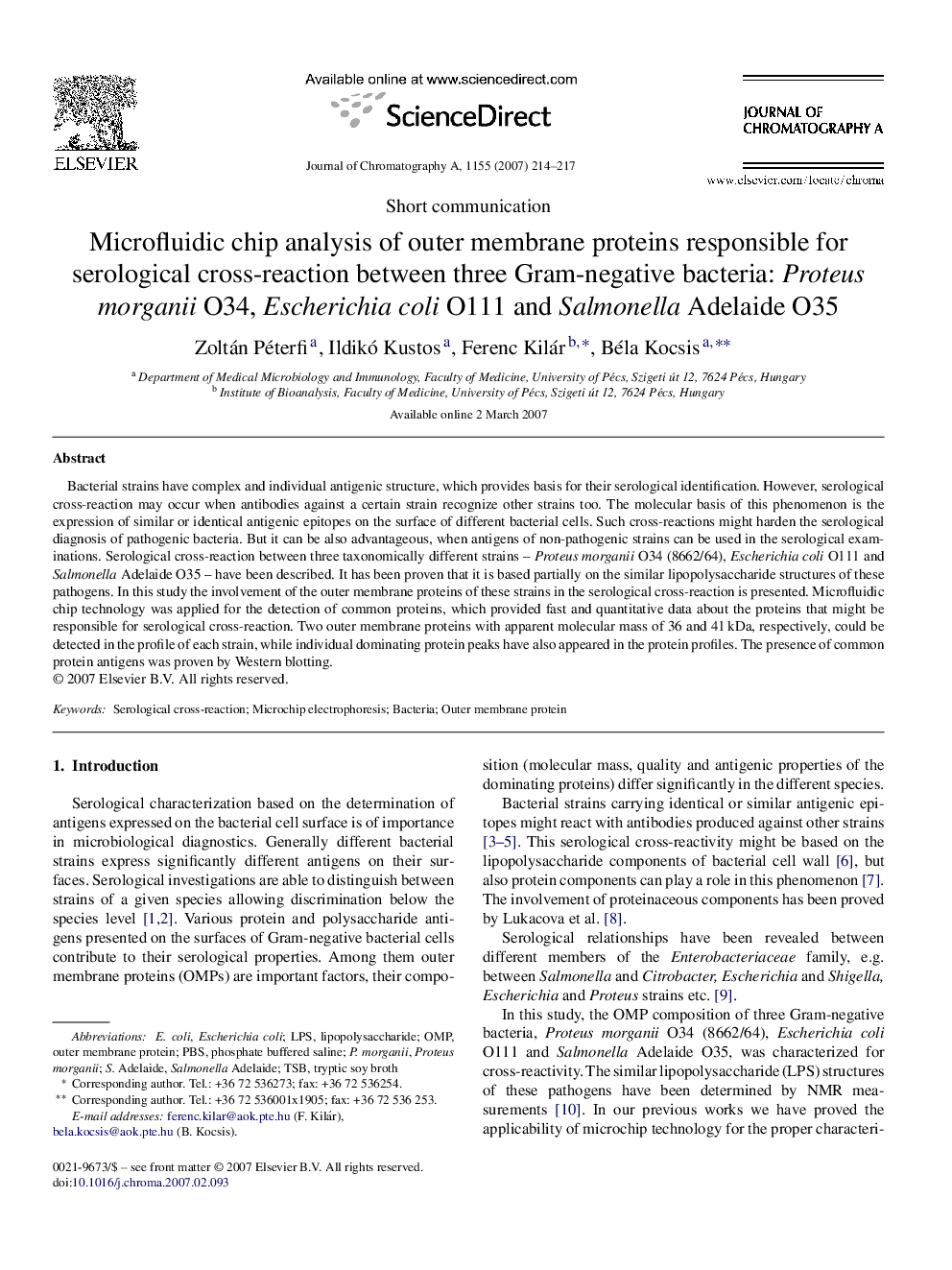| Article ID | Journal | Published Year | Pages | File Type |
|---|---|---|---|---|
| 1207341 | Journal of Chromatography A | 2007 | 4 Pages |
Bacterial strains have complex and individual antigenic structure, which provides basis for their serological identification. However, serological cross-reaction may occur when antibodies against a certain strain recognize other strains too. The molecular basis of this phenomenon is the expression of similar or identical antigenic epitopes on the surface of different bacterial cells. Such cross-reactions might harden the serological diagnosis of pathogenic bacteria. But it can be also advantageous, when antigens of non-pathogenic strains can be used in the serological examinations. Serological cross-reaction between three taxonomically different strains – Proteus morganii O34 (8662/64), Escherichia coli O111 and Salmonella Adelaide O35 – have been described. It has been proven that it is based partially on the similar lipopolysaccharide structures of these pathogens. In this study the involvement of the outer membrane proteins of these strains in the serological cross-reaction is presented. Microfluidic chip technology was applied for the detection of common proteins, which provided fast and quantitative data about the proteins that might be responsible for serological cross-reaction. Two outer membrane proteins with apparent molecular mass of 36 and 41 kDa, respectively, could be detected in the profile of each strain, while individual dominating protein peaks have also appeared in the protein profiles. The presence of common protein antigens was proven by Western blotting.
